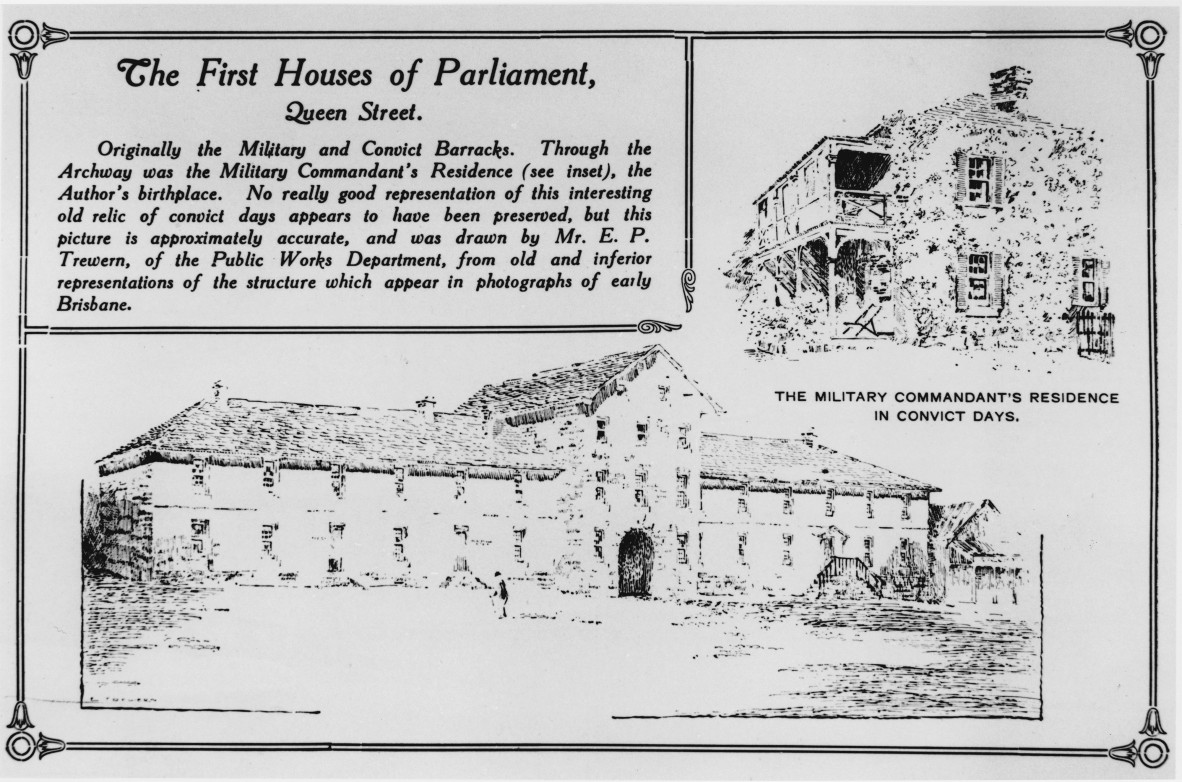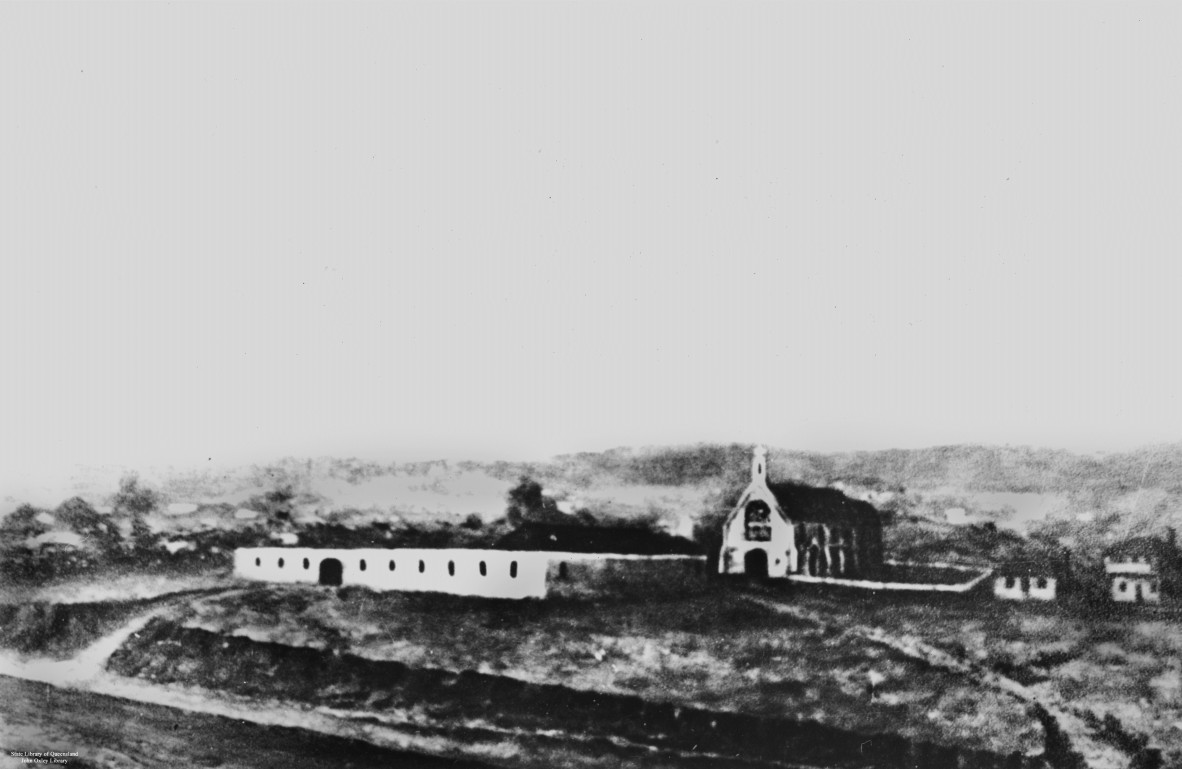Convicts? Living in Queen Street? Yes, the bustling retail hub of Queen Street, Brisbane, hasn’t always been that way. Between 1824 and 1859, convicts and prisoners were residents of this street, and over the years there were prisons in three different locations.
Moreton Bay was established as a Penal Settlement in 1824, with the arrival of convicts and their military guards, a civilian superintendent and some wives and servants. These were the hardened convicts who had been “transported twice” – convicts who committed a second offence in New South Wales, after originally being sentenced to transportation from England to New South Wales. Free settlers were not allowed to live near the penal settlement, although in 1838 German missionaries were allocated land in what is now Nundah.
These first convicts were housed in a temporary wooden building in the vicinity of what is now Brisbane Square, surrounded by Queen, George, Adelaide Streets and North Quay. Within a few years a more solid building was constructed, at the corner of modern Queen Street and Albert Street.

Artists impression of the Convict Barracks Queen Street Brisbane. Neg no. 31216. John Oxley Library
Known as the Prisoners’ Barracks, this stone building was the main gaol until 1849 when the Brisbane Gaol was moved along Queen Street to the former Female Factory. Up to 900 convicts had been housed in the Prisoners’ Barracks but by 1837 only 150 male convicts remained. The old Prisoners’ Barracks was to become the site of Queensland’s first Parliament in the 1860s, until the construction of Parliament House in George Street.
The Female Factory was constructed around 1829 a separate gaol for women prisoners, on the site of the current GPO in Queen Street. In 1837 when problems arose due to lack of security, the women’s prison was moved to Eagle Farm. Security issues didn’t involve women breaking out, but men breaking in! There were approximately 70 female convicts at this time.

Female Convict Factory on the site of the present G.P.O. ca. 1850. Neg no. 153725. John Oxley Library.
In 1848 the now empty Female Factory in Queen Street was altered to become the main prison, gazetted as “the Gaol, Brisbane” in 1850. As Moreton Bay evolved into Brisbane and land was sold to free settlers, the gaol was finally moved from Queen Street and a new building was constructed on Petrie Terrace. The Petrie Terrace Gaol housed both men and women prisoners and was used until the Boggo Road Gaol was built in 1883.
Katy Roberts
Library Technician
More information:
Are you interested in reading more about Queensland’s historic gaols? Search the History Vault of the Boggo Road Gaol Historical Society’s website at http://www.boggoroadgaol.com.au/p/history-vault.html
The site of the Female Factory at Eagle Farm has been listed on the Australian e-Heritage portal https://eheritage.net/record/QLD-600186.
The site is part of the TradeCoast Central Heritage Park. Information about this Park is available here http://www.tradecoastcentralheritagepark.com.au/cms/page.asp?ID=20
Comments
Your email address will not be published.
We welcome relevant, respectful comments.